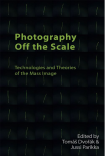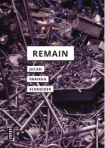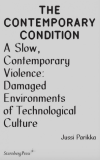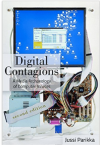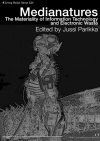Archive
Digital Aesthetics Research Centre
The Digital Aesthetics Research Centre (DARC) is one of the centres in our school and faculty. DARC has been operating about 20 years now with a focus on new and emerging art practices from software and net art to sound, visual, and other media. I am happy to continue and support DARC work as the new director.
The news piece here.
On Practices of Images and Measures of Practice
Out in the new issue of Media Theory
“This conversation between Jane Birkin and Jussi Parikka picks up on two recently published books, Birkin’s Archive, Photography and the Language of Administration (Amsterdam University Press 2021) and Parikka’s co-edited Photography off the Scale (Edinburgh University Press, 2021, with Tomáš Dvorák). The conversation focuses on some of the media theoretical undercurrents of their two books that feature the photographic image as a central part of both their interests, while also shifting to different aspects of institutional practices of images, including questions of logistics of order and enumeration.”
Forthcoming in 2023: Operational Images
First signs of my forthcoming book Operational Images: From the Visual to the Invisual are online. Featured in the University of Minnesota Press new Spring /Summer 2023 catalogue.

An in-depth look into the transformation of visual culture and digital aesthetics
First introduced by the German filmmaker Harun Farocki, the term operational images defines the expanding field of machine vision. In this study, media theorist Jussi Parikka develops Farocki’s initial concept by considering the extent to which operational images have pervaded today’s visual culture, outlining how data technologies continue to develop and disrupt our understanding of images beyond representation.
Charting the ways that operational images have been employed throughout a variety of f ields and historical epochs, Parikka details their many roles as technologies of analysis, capture, measurement, diagramming, laboring, (machine) learning, identification, tracking, and destruction. He demonstrates how, though inextricable from issues of power and control, operational images extend their reach far beyond militaristic and colonial violence and into the realms of artificial intelligence, data, and numerous aspects of art, media, and everyday visual culture.
Serving as an extensive guide to a key concept in contemporary art, design, and media theory, Operational Images explores the implications of machine vision and the limits of human agency. Through a wealth of case studies highlighting the areas where imagery and data intersect, this book gives unprecedented insight into the ever-evolving world of posthuman visuality.
See here for the preface to the book.
The cover image includes a detail from Maria Constanza Ferreira’s video work.
The Lab Book is out!
I am very happy that our co-authored The Lab Book: Situated Practices in Media Studies is out. Written with Lori Emerson and Darren Wershler, the book stems from research that started around 2015 and investigates the changing status of the lab as it features especially outside the fields of science and engineering. The mushrooming of labs of all sorts – and not all only academic, as many coffee labs, brew labs, and hair labs testify – has resulted in a situation we refer to as the hybrid lab. The many aspects that make up the hybrid lab are captured in this diagram on the extended lab, a model that also guides our book’s chapters

We are also grateful for the several dialogues, interviews, and other help that several people affiliated directly or indirectly with labs provided. We were able to test our ideas and get really important feedback from so many different lab setups that also showed the many scales of labs. Some of the interviews are available on University of Minnesota Press’ Manifold platform.
Do get in touch with any queries, review copy requests, or alike.

“Lively, timely, and filled with vivid examples, The Lab Book is a highly readable and critically sophisticated account of current lab culture. Written by three distinguished practitioners, it examines the rhetoric that links real and imaginary ideas of experimentality with systems of power and authority across a surprising range of disciplines. A fun, smart, useful guide to ongoing work in media studies.”
— Johanna Drucker, author of Visualization and Interpretation: Humanistic Approaches to Display
“The Lab Book makes an extremely important contribution to contemporary discourse about the production of knowledge. In many ways, it is the most important book on the topic since the laboratory studies of Bruno Latour in its potential reach across disciplines and methodologies. Its careful close reading of images and quoted material is particularly compelling, and the writing style is accessible and clear, even while explaining somewhat arcane topics in science studies around infrastructures, apparatuses, ideologies, and assemblages.”
— Elizabeth Losh, author of Hashtag
Final volume of Recursions: Hardwired Temporalities
We are happy to announce that the collection Media Infrastructures and the Politics of Digital Time: Essays on Hardwired Temporalities , edited by Axel Volmar and Kyle Stine is out in the Recursions series both as Open Access and as hardback (for libraries).
“In a crucial sense, all machines are time machines. The essays in Media Infrastructures and the Politics of Digital Time develop the central concept of hardwired temporalities to consider how technical networks hardwire and rewire patterns of time. Digital media introduce new temporal patterns in their features of instant communication, synchronous collaboration, intricate time management, and continually improved speed. They construct temporal infrastructures that affect the rhythms of lived experience and shape social relations and practices of cooperation. Interdisciplinary in method and international in scope, the volume draws together insights from media and communication studies, cultural studies, and science and technology studies while staging an important encounter between two distinct approaches to the temporal patterning of media infrastructures, a North American strain emphasizing the social and cultural experiences of lived time and a European tradition, prominent especially in Germany, focusing on technological time and time-critical processes.”
The book is also the last volume we (myself, Anna Tuschling, and Geoffrey Winthrop-Young) published as founding editors of Recursions (2014-2021). From Sybille Krämer’s Medium, Messenger, Transmission: An Approach to Media Philosophy to the two books out this year (Media Infrastructures and the Politics of Digital Time and Jane Birkin’s Archive, Photography and the Language of Administration) we managed to publish key works by both established senior philosophers and from emerging talented scholars in ways that we hope contributed to the international media theory discussions in a significant way. While we have expressed our wish to the publisher, Amsterdam University Press, to discontinue the series, we will continue to support the published books and their authors to ensure they get the attention they deserve.
As a reminder, have a look at the full list of Recursions volumes.
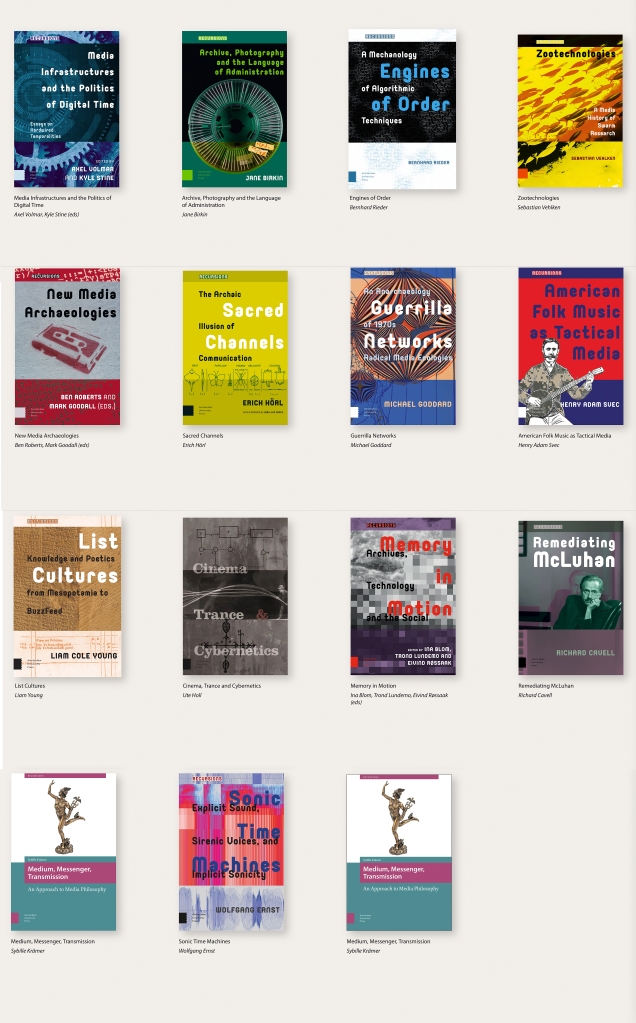
Aarhus
Some news:
I will be starting as professor in Digital Aesthetics & Culture at Aarhus University in January 2022. I am excited to join a group of fantastic colleagues & the department of Digital Design & Information Studies (which is part of the School of Communication and Culture). I am happy about all sorts of new opportunities, collaborations, and projects that this will mean, among them a project and a research (/teaching) focus on critical environmental data (more on that later).
Of course, I will continue with certain projects and work with my colleagues at Winchester School of Art (and other parts of the University of Southampton) as well as in my role as project leader for Operational Images and Visual Culture at FAMU in Prague.
This new affiliation will also trigger the important question if I need to shift teams from Arsenal to Aarhus GF.

Academia Europaea
I am happy to share the news that I’ve been nominated and elected as Member of the Academia Europaea in the section of Film, Media & Visual Studies.
Here’s a short news item with some more details.
An ecoaesthetic of vegetal surfaces
“An ecoaesthetic of vegetal surfaces: on Seed, Image, Ground as soft montage” is the title of the new article we just published in the Journal of Visual Art Practice with Abelardo Gil-Fournier. It draws on the video essay published last year and engages especially with the practice-led methodology. The video was just recently installed in the Vibrating Clouds exhibition in Shenzen and will be part of at least two exhibitions in later 2021/2022 (in Europe). With Abelardo, we are currently writing a book on vegetal images and the question of multi-scalar planetary surfaces.
Below a short excerpt of the article’s Introduction section
—
This essay builds on our recent Seed, Image, Ground video project (2020) and how it entangles with our larger research project on surfaces. Both address the surface of plants, agriculture and the biosphere in relation to the surfaces of media, such as screens and images. The video essay was commissioned by the Fotomuseum Winterthur in 2020 and it is openly available at the institution’s YouTube channel. While the video is a central reference point for this visual essay, our aim is not so much to theorise our own moving images and their juxtapositions and rhythms. Instead, in this article, we present a series of surfaces and scales that appear in and through the images. Images build upon images and this constitutes the practice-led approach to the temporal unfolding in the video. The video works as a temporal articulation of image surfaces across and upon living surfaces. In other words, we articulate the moving images as practices of surfaces, plants, and images: hence the central motif of the video essay and this accompanying text is to ask ‘what do images of growth look like?’ How do such images operate in two channel video practice that builds on Harun Farocki’s work? Here, we do not refer only to operational images (Farocki 2004), but also to the idea of a ‘soft montage’ (Farocki 2009) which becomes a methodological reference point as one aspect of practice of images about and across images that can also be conceptualised as we do in this essay. The video and its relation to text are ecoaesthetic (Cubitt 2017) in the sense of dealing with the entanglement of media and environmental materials where the double articulation of images and green plant surfaces are the engine of our argument.
In this way, the video is a methodological exercise that helps to articulate a problem space (Lury 2021) – a space where problems, methods, and concepts are dynamically rearticulated, and where the space of their composition is not a stable container where a thing is addressed but part of their making: ‘a problem is not given but emerges with-in and out-with a myriad sequence of actions or methods that (trans)forms the problem space’ (Lury 2021, 6). This composition and this montage points to the ways methods are enacted only in the material practices that constitute the problem space as it unfolds as a living issue and tissue. Can this sequence Lury refers to be also a sequence of images? Could the actions be those of images? As the following visualisation of the evolution of the timeline of our video essay show, the video’s timeline as a problem space presents its fabrication as a surface. The cuts, the movements of the sequences, and other editing operations manifested in the figure, call for a dynamic understanding of surface as surfacing, built on multiple genealogies of instrumentation, technology, and cultivation.
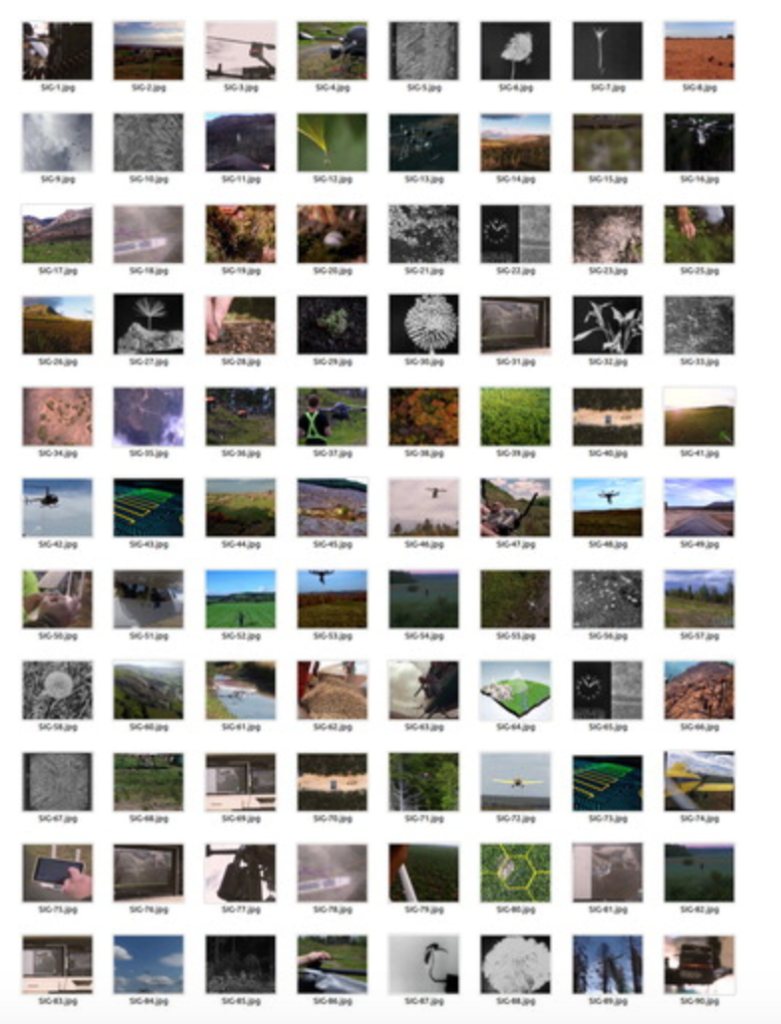
Una geología de los medios
I am happy to learn that the Spanish translation of A Geology of Media is now out and available! Una geología de los medios is published by the Argentinian publishing house Caja Negra. A big thanks to the translator, Maximiliano Gonnet, professor Claudia Kozak for writing a preface to the new edition, and the whole team that made this version possible. The Spanish edition also includes a bit of extra: an interview conducted by Alejandro Limpo, titled “Una teoría vertical de los medios” – a vertical theory of media – where we discuss some of the broader contexts of A Geology of Media as it relates to contemporary themes of materiality, environmental humanities, and more.
CCCB (Barcelona) published a preview of the Spanish translation (as well as Catalan excerpt!) – some of the joint work we did with Garnet Hertz on “zombie media”.



Photography Off the Scale is out
Our book Photography Off the Scale is out and available! Edited by myself and my FAMU colleague Tomáš Dvořák it offers an interdisciplinary perspective on the scale and quantity of images in contemporary visual culture. From the mass-image to post-photography, AI to online visual culture, planetary diagrams to LIDAR, the breadth of topics is wide. The book emerges from our Operational Images and Visual Culture project (FAMU, Prague – and funded by the Czech Science Foundation, 2019-2023).

Here are the really nice blurbs from Lev Manovich, Lisa Parks, and Peter Szendy:
“Among the many fundamental changes taking place in contemporary photography and media culture, probably the most important are changes in scale. The new magnitude of image production, the instant global dissemination of billions of new images, and the adoption of AI that turns these images into big data are only some examples of how the visual has been “scaled up” in the 21st century. Now we finally have a first book that rethinks the history and theory of photography through the lens of scale – and connects this concept to a range of others including measure, politics, gender, subjectivity, and aesthetics.”
– Lev Manovich, Presidential Professor, The Graduate Center, City University of New York
“Someone takes a picture somewhere in the world. Such a trivial action is multiplied by a trillion. Or much more, since the majority of pictures today are produced by machines for machines. This collection of essays brilliantly explores the unheard-of effects of scale on the ontology of photography and it touches upon the sublime of the infinity of digital images.”
– Peter Szendy, Brown University
“This book’s refreshing and much needed take on photography cuts through the infoglut and explores the apparatus, infrastructure, and operations of contemporary pictures. Addressing everything from snapshots to machine vision, Photography Off the Scale unfurls a vital field of technology, politics and aesthetics reshaping the world.”
– Lisa Parks, Distinguished Professor of Film & Media Studies, University of California-Santa Barbara
With Tomáš, we wrote a substantial introduction outlining the stakes of the approach – how it relates to scholarship in photography and links it to key questions of digital culture – and we are really pleased with the whole lineup of the book:
Introduction: On the Scale, Quantity and Measure of Images
Jussi Parikka & Tomáš Dvořák
Part I: Scale, Measure, Experience
1. The Mass Image, the Anthropocene Image, the Image Commons
Sean Cubitt
2. Beyond Human Measure: Eccentric Metrics in Visual Culture
Tomáš Dvořák
3. Living with the Excessive Scale of Contemporary Photography
Andrew Fisher
4. Feeling Photos: Photography, Picture Language and Mood Capture
Michelle Henning
5. Online Weak and Poor Images: On Contemporary Feminist Visual Politics
Tereza Stejskalová
Part II: Metapictures and Remediations
6. Photography’s Mise en Abyme: Metapictures of Scale in Repurposed Slide Libraries
Annebella Pollen
7. The Failed Photographs of Photography: On the Analogue and Slow Photography Movement
Michal Šimůnek
8. Strangely Unique: Pictorial Aesthetics in the Age of Image Abundance
Josef Ledvina
Part III: Models, Scans and AI
9. On Seeing Where There’s Nothing to See: Practices of Light Beyond Photography
Jussi Parikka
10. Planetary Diagrams: Towards an Autographic Theory of Climate Emergency
Lukáš Likavčan & Paul Heinicker
11. Undigital Photography: Image-Making Beyond Computation and AI
Joanna Zylinska
12. Coda: Photography in the Age of Massification
Joan Fontcuberta & Geoffrey Batchen
The book is published by Edinburgh University Press and is part of their Technicities book series. A special thanks to Elise Hunchuck for her outstanding expertise in helping us to fine-tune the writing and to Abelardo Gil-Fournier for the cover image that comes from his project Bildung.
For any inquiries about the book, review copy requests, etc, please contact me or Tomáš.


